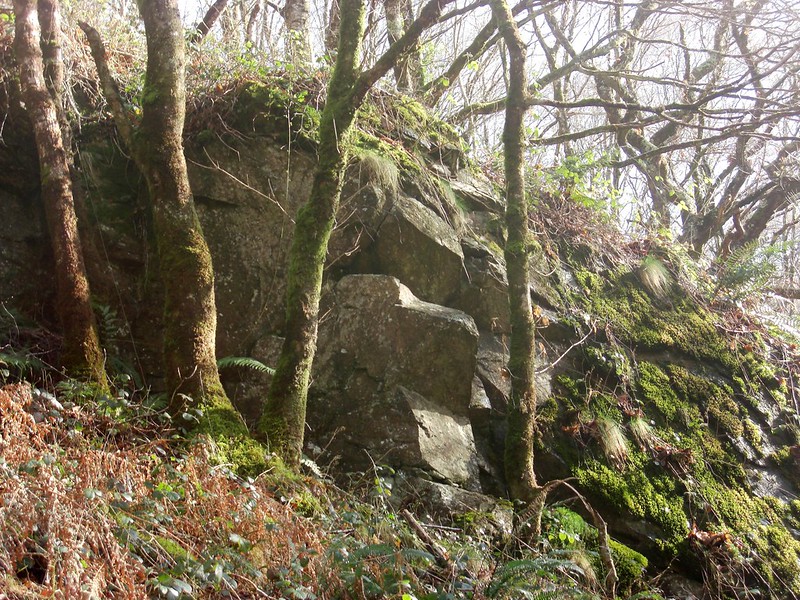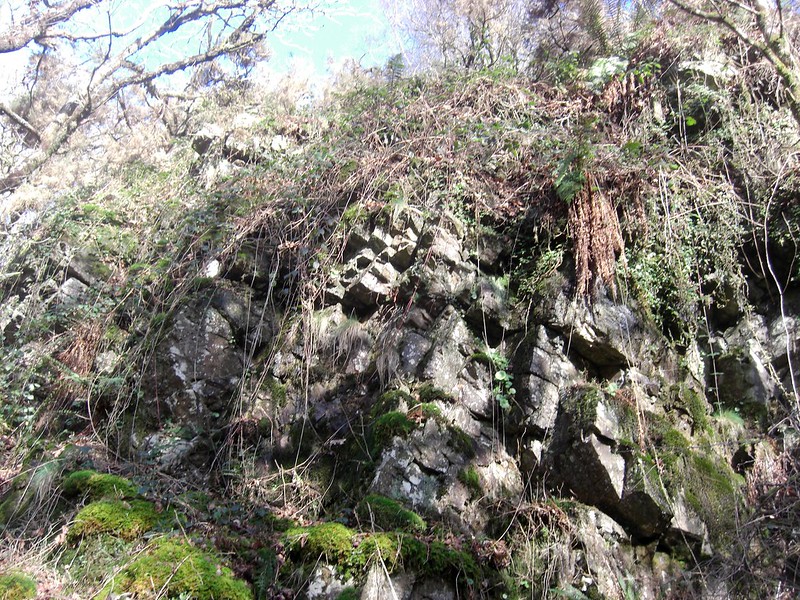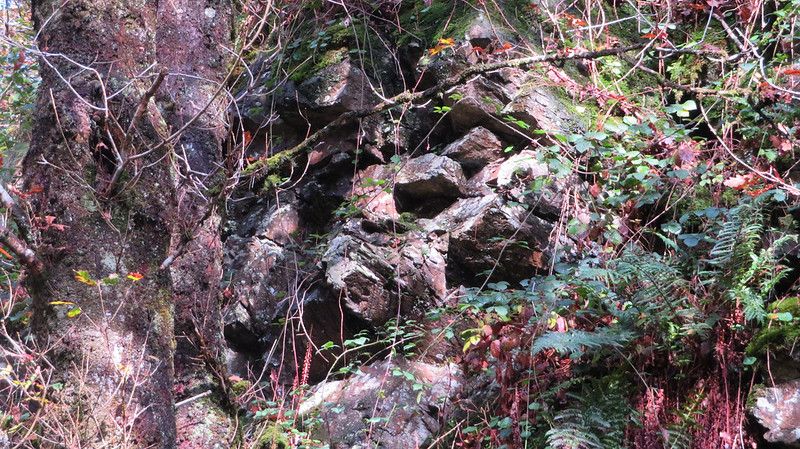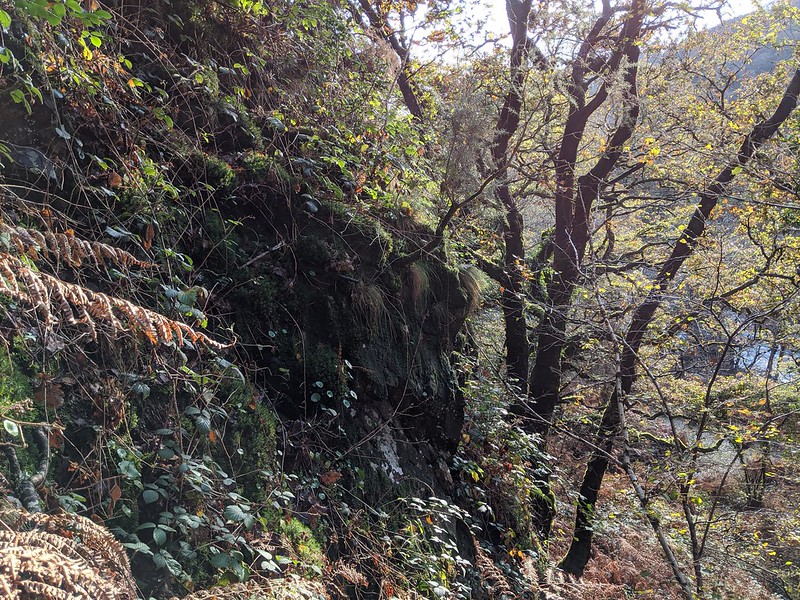TORS OF DARTMOOR
a database of both lesser- & well-known rocks and outcrops
Double Dart Rocks
 This is a view of the craggy rock face that Eric Hemery (1983) describes on p.589 of 'High Dartmoor' as; "...a characteristic though nameless compensation for the humble Aish Tor. Protruding from the final steep of the hill like a huge buttress, its top weathered to smoothness, the crag looks best from beneath the trees on the valley floor beneath the precipitous slope, opposite, of Holne Wood; between them, Double Dart approaches Deadman's Corner and Wellsfoot Island, and the crag is a fitting place from which to behold, as well as hear, the departure of this swift river..."  Despite Hemery's compelling and beautiful description of the area, he fails to offer the crag a name and it was only in 2012 when the name of 'Double Dart Rocks' emerged from Tim Jenkinson.  It might be a scruffy crag which is difficult to access if you leave the level track beside the river below - its rugged face cloaked in ferns, bracken and moss - but it is nonetheless quite striking, especially during the winter months when it is best viewed. 
| ||||||||||||||||||||||||||||||